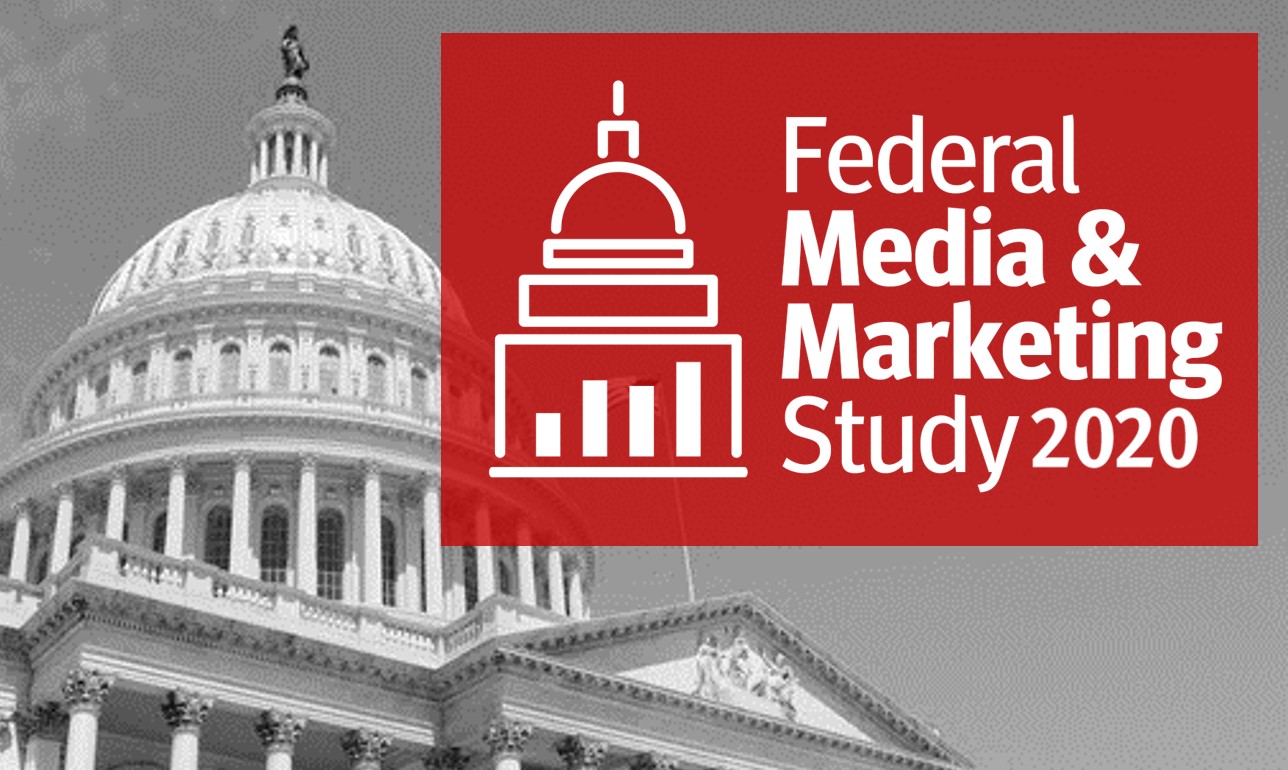FMMS
Insights Pulled from a Sneak Peek of the 2020 Federal Media & Marketing Study

Laurie Morrow, Vice President of Research Strategy
From the desk of Laurie Morrow, Vice President of Research Strategy, Market Connections Inc.
Over the twelve years my team has conducted the Federal Media & Marketing Study, we have looked at how federal audiences are engaging with different media properties from print publications to online to newer social medias. In addition to analyzing readership, we also investigate habits, trends, levels of trust and confidence and time spent with media along with other marketing tactics year over year.
With all the changes and pivots the federal market and those marketing to them had to make this year, I was eager to see whether there would be changes in this year’s results due to the pandemic, elections and other recent major events.
Taking a sneak peek into the findings, I found some interesting results around trust and confidence that while not tied to pandemic, may be a result of a charged political and social climate this year.
Confidence in News
The first is an overall decline in confidence in general news media. Like others, I was not necessarily surprised by this finding, as we started to see some drops in confidence in general news sources last year tied to political party affiliation.
What I did find surprising was seeing a decline in some federally focused media as well this year. Over the years, the level of confidence in federal news outlets has relatively remained unscathed but has distrust now seeped into federal media? Is this due to the charged climate, or do we expect to see this trend continue to grow in an era where “fake news” and general distrust in media grows along political and geographical lines?
Trust in Source
Similar to the level of confidence in news, this year’s results indicate an overall decline in trust of ALL sources of information, from associations to industry pubs to government contractors. While the ranking of trust in sources is relatively the same as last year, the general decline across the board could possibly point to a growing skepticism within the federal audience. In coming years, we will continue to measure that level of trust to see if this continues to trend down or if this current dip in trust is due to the current climate.
Regardless of whether this is a trend or not, this begs an important question, “What can we do as an industry to regain our federal customers’ trust?”
Other Results
In addition to details around the level of confidence in media properties and rank sources of information by trustworthiness, the 2020 Federal Media & Marketing Study most notably studies the readership of general and federal publications, social media site usage, and television viewership and radio listenership (for the DMV), among other marketing tactics. We highlight any differences found by agency type, location (inside the beltway vs. outside), party affiliation, and geography (urban, suburban, rural) among other characteristics, where statistically different.
Learn more about our study, purchase the on-demand overview and/or annual subscription to the dashboard.
https://www.marketconnectionsinc.com/fmms2020study/
Federal Media & Marketing Study 2020

12th Annual Study On-Demand Release*
Thursday, October 29, 9 AM
*Due to COVID-19 and the inability to present results in an in-person breakfast, the 2020 study results are available as an on-demand video and downloadable overview presentation.
PURCHASE ON-DEMAND VIDEO & OVERVIEW
ABOUT THE STUDY
In its 12th year, the Federal Media & Marketing Study continues to empower marketers to hone and perfect their strategic marketing campaigns with valuable and reliable data directly from their federal customers. The survey provides key information about the federal audience’s media usage across print, broadcast, social and digital sources. Combining this data with demographics, including job function, location, purchase area and more, marketers have the ability to slice and dice the data and map each to specific media habits, allowing them to target specific audiences.
The survey represents the views of thousands of federal workers in a variety of positions. Whether you are interested in a broad awareness campaign, or a more focused agency-based marketing effort, data from the study can provide you key insights about the media and marketing habits of this tough-to-reach federal market audience.
WHAT TO EXPECT
- Job Function and Purchase Responsibility – More than 25 different job functions and areas of purchase, by product and service
- Media Usage – 60+ publications, 100+ websites and mobile sites; 10+ social sites; differences inside vs. outside the Beltway
- Trusted Content – To what extent do decision makers trust news and information from different media sources?
- Time Spent Accessing Content – How much time do government employees spend accessing content online, watching TV, listening to the radio and reading e-newsletters?
- Media Habits of Federal Employees: A Day in the Life – What media sources are federal employees accessing during different parts of their day?
NEW IN 2020
- The Effects of COVID-19 – From media habits to in-person events, what should marketers know to adjust their strategies?
- Virtual Events and Webinars – With live events on hold for the time being, when it comes to planning your virtual events, what should you take into consideration? What are feds’ preferences?
- Teleworking and Commuting – How much are feds teleworking or commuting and how does this change their media habits?
- Geography – Are there differences among federal employees who live and work in urban, suburban and rural environments?
